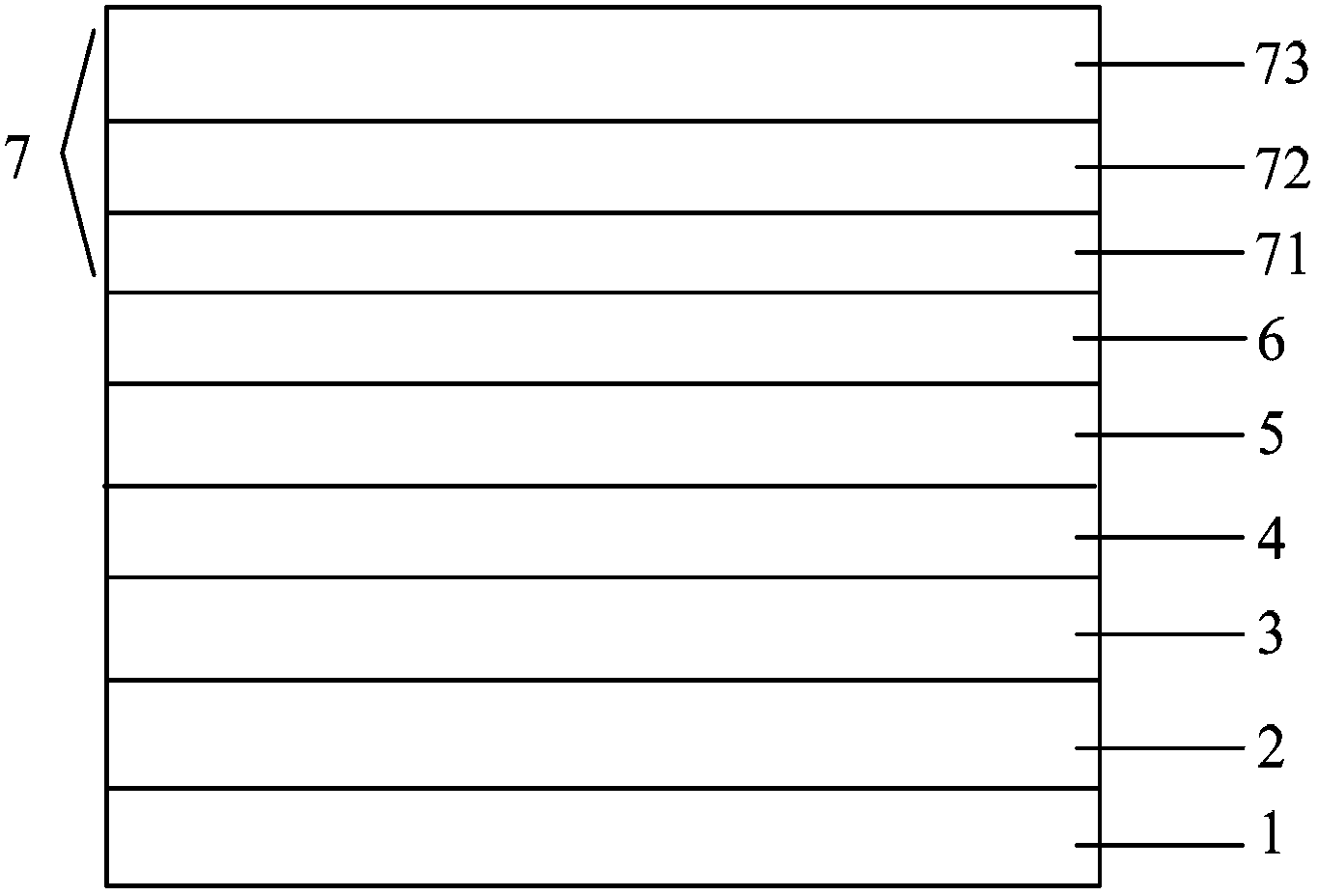Organic light-emitting device and preparation method thereof
An electroluminescent device and electroluminescent technology, which are applied in the fields of electro-solid devices, semiconductor/solid-state device manufacturing, electrical components, etc., can solve the problems of total reflection loss, low light-emitting performance of light-emitting devices, etc., and achieve the effect of improving electron injection capability.
- Summary
- Abstract
- Description
- Claims
- Application Information
AI Technical Summary
Problems solved by technology
Method used
Image
Examples
Embodiment 1
[0054] A method for preparing an organic electroluminescent device, comprising the following steps:
[0055] (1) Wash the glass substrate with detergent, deionized water, and ultrasonic for 15 minutes to remove organic pollutants on the glass surface;
[0056] (2) Hole injection layer, hole transport layer, light-emitting layer, electron transport layer and electron injection layer were sequentially prepared on the ITO glass substrate by vacuum evaporation method;
[0057] The evaporation of the hole injection layer, the hole transport layer, the light emitting layer, the electron transport layer and the electron injection layer is vacuum evaporation, the evaporation temperature is 400 ° C, and the vacuum degree is 1 × 10 -5 Pa. Wherein, the material of the hole injection layer is MoO 3 , the thickness is 35nm; the material of the hole transport layer is NPB, the thickness is 50nm; the material of the light-emitting layer is BCzVBi, the thickness of the light-emitting layer ...
Embodiment 2
[0062] A method for preparing an organic electroluminescent device, comprising the following steps:
[0063] (1) Wash the glass substrate with detergent, deionized water, and ultrasonic for 15 minutes to remove organic pollutants on the glass surface;
[0064] (2) Hole injection layer, hole transport layer, light-emitting layer, electron transport layer and electron injection layer were sequentially prepared on the AZO glass substrate by vacuum evaporation method;
[0065] The evaporation of the hole injection layer, the hole transport layer, the light emitting layer, the electron transport layer and the electron injection layer is vacuum evaporation, the evaporation temperature is 400 ° C, and the vacuum degree is 1 × 10 -5 Pa. Wherein, the material of the hole injection layer is WO 3 , with a thickness of 80nm; the material of the hole transport layer is TCTA, with a thickness of 60nm; the material of the light-emitting layer is ADN, with a thickness of 5nm; the material o...
Embodiment 3
[0070] A method for preparing an organic electroluminescent device, comprising the following steps:
[0071] (1) Wash the glass substrate with detergent, deionized water, and ultrasonic for 15 minutes to remove organic pollutants on the glass surface;
[0072] (2) Hole injection layer, hole transport layer, light-emitting layer, electron transport layer and electron injection layer were sequentially prepared on the IZO glass substrate by vacuum evaporation method;
[0073] The evaporation of the hole injection layer, the hole transport layer, the light emitting layer, the electron transport layer and the electron injection layer is vacuum evaporation, the evaporation temperature is 400 ° C, and the vacuum degree is 1 × 10 -5 Pa. Wherein, the material of the hole injection layer is V 2 o 5 , the thickness is 20nm; the material of the hole transport layer is TCTA, the thickness is 30nm; the material of the light-emitting layer is Alq 3 , with a thickness of 40nm; the materia...
PUM
| Property | Measurement | Unit |
|---|---|---|
| Thickness | aaaaa | aaaaa |
| Thickness | aaaaa | aaaaa |
| Thickness | aaaaa | aaaaa |
Abstract
Description
Claims
Application Information
 Login to View More
Login to View More - R&D
- Intellectual Property
- Life Sciences
- Materials
- Tech Scout
- Unparalleled Data Quality
- Higher Quality Content
- 60% Fewer Hallucinations
Browse by: Latest US Patents, China's latest patents, Technical Efficacy Thesaurus, Application Domain, Technology Topic, Popular Technical Reports.
© 2025 PatSnap. All rights reserved.Legal|Privacy policy|Modern Slavery Act Transparency Statement|Sitemap|About US| Contact US: help@patsnap.com


